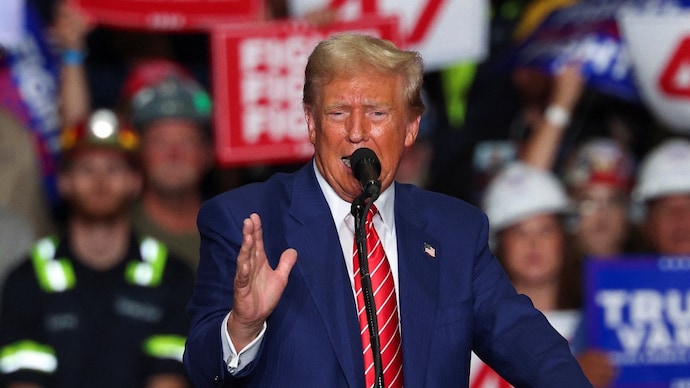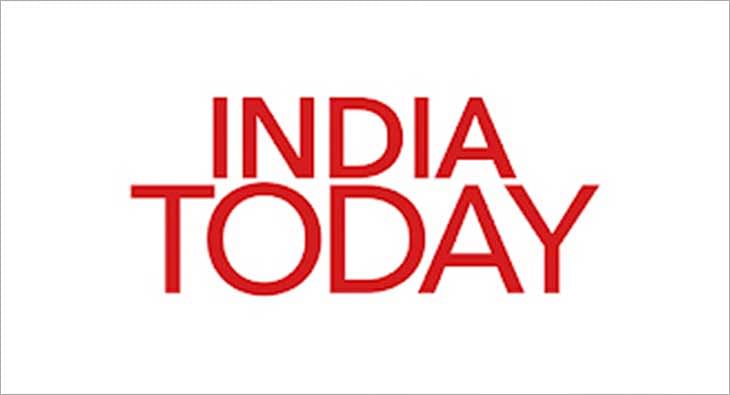As the US presidential elections approach, Donald Trump threatens 100% tariffs on imports from countries moving away from using the dollar. This move is aimed at reinforcing the dollar's dominance amid growing global de-dollarisation efforts.

Trump threatens 100% tariffs to reinforce Dollar's importance. (Photo - Reuters)
The heat of the upcoming US presidential elections reaches India as Donald Trump threatens to lift tariffs to 100 per cent on imports from countries moving away from using the dollar. Through this, Trump wants to reinforce the dollar’s importance in the international market at a time when many countries, including India, are trying to de-dollarise their trades and instead use local currencies.
Every century has its global currency coming out from the most powerful economy. But, the share of the US in global GDP is contracting. This is reflected in the changing importance of the dollar. Should the US threat bother India? And, why is protecting the dollar’s dominance a major issue in the upcoming elections?
Dollar losing its importance
The United States accounted for nearly 40 per cent of the global GDP in 1960, according to the World Bank. But its share shrank to 30 per cent in 1973 and remained only 26 per cent in 2023. In the meantime, India’s share in global trade rose from 2.7 per cent to 3.4 per cent and China’s rose from 4.4 per cent to nearly 17 per cent. This clearly shows the emergence of new economies in the last few decades.
The dollar index, which measures the US dollar's value relative to its most significant trading partners, is almost at a standstill. The dollar index was 124.2 on March 18, 2020, and it stood at 122.6 on August 30, 2024.
“There are two scenarios that could erode the dollar’s status. The first includes adverse events that undermine the perceived safety and stability of the dollar — and the U.S.’s overall standing as the world’s leading economic, political and military power,” noted a report by Morgan Stanley. “The second factor involves positive developments outside the U.S. that boost the credibility of alternative currencies — economic and political reforms in China, for example.”
Nations are ditching dollar
All central banks keep foreign reserves but they are changing their portfolio. Dollars are increasingly getting away from central banks’ foreign reserves. The share of USD in foreign reserves was over 70 per cent in 2002, which came down to only 59 per cent in Q1 2024. In the same period, the share of other currencies except the euro, yen and pound, rose significantly from 1.8 per cent to 10.9 per cent.
Aside from forex in currencies from emerging markets, central banks are also rapidly increasing their gold stack. “With central banks accelerating their gold purchases to above 1,000 tonnes per year in 2022 and 2023, the market is finally beginning to appreciate the importance of their contribution to gold demand,” the World Gold Council noted. It added that accounting for almost a quarter of annual gold demand in both years may have attributed central banks’ ongoing voracious appetite for gold as a key driver of its recent performance.
Central banks’ gold purchases rose from 79.15 tonnes in 2010 to 579.6 tonnes in 2015 and further rose to 1,037.1 tonnes in 2023. During January-March 2024, central banks from Turkey, China, and India remained among the highest purchasers of gold.
Estimates based on weekly data also suggested that the Reserve Bank of India’s gold reserves rose by five tonnes in July 2024, meaning the RBI has added gold every month so far this year. Net purchases of gold since January is 43 tonnes, lifting RBI’s gold holdings to 846 tonnes.
Trade in local currencies
America’s sanctions on certain nations like Russia and the downfall of some currencies like the Indian rupee have pushed countries to ditch the dollar and trade in local currencies.
India, too, has put in place an additional arrangement for invoicing, payments, and settlement of trade in the Indian Rupee. The RBI has permitted the opening of Special Rupee Vostro Accounts (SRVAs) of banks from various countries.
There are 23 countries so far that have accepted to trade in Indian rupee. Bangladesh, Belarus, Botswana, Fiji, Germany, Guyana, Israel, Kazakhstan, Kenya, Malaysia, Maldives, Mauritius, Myanmar, New Zealand, Oman, Russia, Seychelles, Singapore, Sri Lanka, Tanzania, Uganda, the United Arab Emirates (UAE), and the United Kingdom are the countries under this arrangement.
“As the transactions will be settled in lNR, it will reduce the exchange rate risk for the Indian exporters and importers. Further, the increased usage of this additional arrangement may also reduce dependence on freely convertible currencies,” Bhagwat Karad, then Minister of State for Finance of India, said in the Parliament on December 4, 2023.
Interestingly, India had a trade of USD 304 billion with these countries in 2023-24. This accounted for 27.3 per cent of India’s overall trade.
So, the world is learning to live without dollars and the US appears to neither understand nor accept this.
Published On:
Sep 10, 2024
Tune In

 1 week ago
1 week ago


















